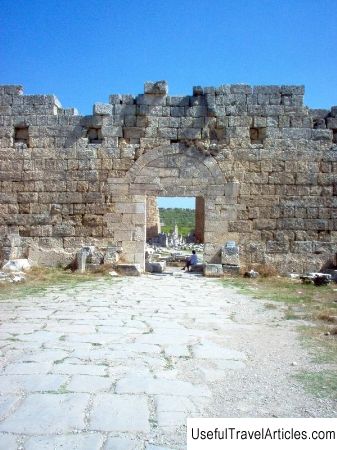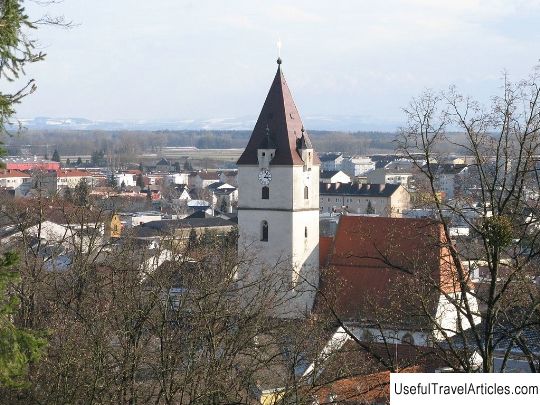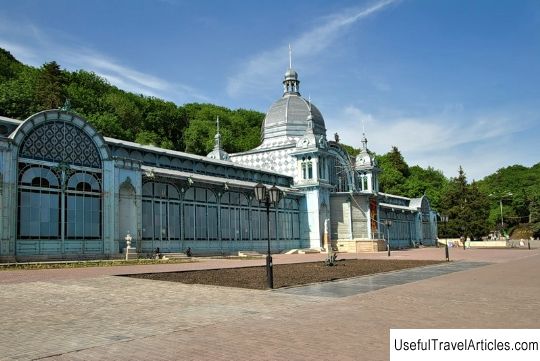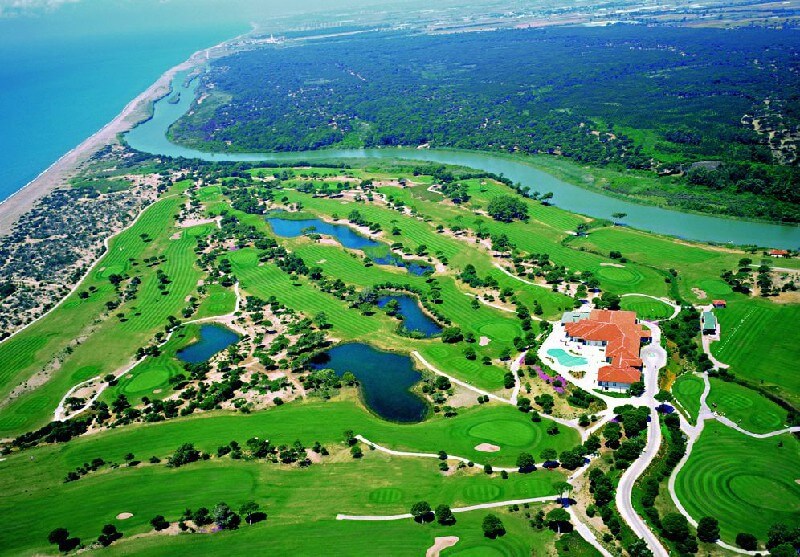Perge description and photo - Turkey
Rating: 8,4/10 (2432 votes) 
Perge description and photo - Turkey. Detailed information about the attraction. Description, photographs and a map showing the nearest significant objects. The title in English is Perge. Photo and descriptionThe city of Perge was founded after the Trojan War and soon became a major port of Pamphylia. Little information remains about the city until the arrival of Alexander the Great in 333 BC. The inhabitants of Perge themselves opened the gates for him and allowed the commander to use the city as a military base. In 133 BC. the city of Perge became part of the Roman Empire. It was during the reign of the Romans that the city began to grow and prosper. Perge is also famous for the fact that the Apostle Paul read his sermon here for the first time. The city theater of the Greco-Roman type was built in the second half of the II century AD. and at one time it could accommodate about 15 thousand spectators. The building consisted of two floors. The walls are decorated with bas-reliefs depicting Dionysus and Kentros. Even today, fragments of these decorations can be discerned. All spectator seats are divided into two sectors with thirteen staggered seats. The Romans used the theater building for gladiatorial fights. A fountain was built on the outer wall of the theater. There is a U-shaped stadium in front of the theater, which has been well preserved to this day. It was also built in the 2nd century AD. The stadium could accommodate 12 thousand spectators. Sections of the city's fortress walls up to 12 meters high have been preserved. The southern gate, through which tourists enter the city, is also called the Roman Gate. Immediately behind them is the Hellenistic Gate (3rd century AD). At the edges of the gate there are rounded towers with a destroyed top and niches, in which there are sculptures found during excavations. Outside the gate is a small courtyard with niches in the walls. The north side of the yard has three entrances. They are built in the form of two-storey approaches. In the niches of this entrance structure, statues of Roman emperors and empresses once stood. On the eastern side of the Hellenistic Gate is the Perga agora. It was built in the 4th century AD. The agora is surrounded by columns, and workshops and rooms are located around the perimeter. There is a round temple in the center. There is a church on the south side. A recent archaeological search has uncovered a well-preserved Roman bath located opposite the agora. From the main gate to the acropolis there is a wide, marble-paved Arcadian street with colonnades on both sides. In the middle of the street there is a two-meter wide water channel, and on the sides there were merchants' stalls. This main street is crossed by another one running from east to west, at the widened western end of which the ruins of a monumental palaestra can be found. Palestra is a well-preserved building dedicated to the emperor Claudius (41-54 AD). There are ruins of baths near the city walls at the western end of this street. On the east side of Arcadiana Street, a bishop's basilica with two naves was built in the Byzantine era. On the opposite side of Arcadian, at the foot of the acropolis, there is a nymph (sacred spring), which is a semicircular structure dating from the period of the reign of Hadrian (130-150 AD). In the center of this huge fountain, 21 meters long and 37.5 meters wide, stood a statue of the god of the river. Many different sculptures were found on the territory of the fountain. The Acropolis was located on the mountain just behind the nymph.       We also recommend reading Meat rows (Vleeshal) description and photos - Netherlands: Haarlem Topic: Perge description and photo - Turkey. |




